Nurturing Nature: Social Forestry Initiatives in the northern Western Ghats
The northern Western Ghats, a biodiversity hotspot in India, has been facing increasing environmental pressures due to deforestation, habitat fragmentation, and unsustainable resource extraction. In response to these challenges, Tropical Rainforest Ecological Camp (TREC) has stepped up its efforts to promote social forestry activities in the region. This article explores the multifaceted approach of TREC, highlighting its initiatives in conservation, community engagement, and sustainable development.
Dr. Meghashyama Bhat
8/16/20245 min read
Importance of Social Forestry
Environmental Benefits
Social forestry with diverse species, offers significant environmental advantages. Increasing green cover helps mitigate climate change by absorbing carbon dioxide. It prevents soil erosion, conserving water and improving soil fertility. Social forestry also enhances biodiversity by providing habitats for various species and purifying the air by filtering pollutants, improving overall air quality.
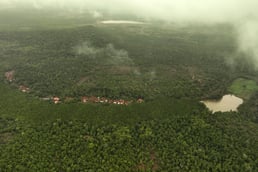

Economic Benefits
It provides a sustainable source of livelihood for rural communities through the cultivation and sale of forest products like timber, fuel wood, resins, gums, honey, and medicinal plants. Additionally, it creates employment opportunities for afforestation, tends to plantations, and adds value to forest produce. Furthermore, it enhances the overall economy through the development of forest-based industries and contributes to the growth of the region.


Recreational Benefits
Social forestry offers valuable recreational and educational spaces as it creates lush green spaces, perfect for picnics, hiking, bird-watching, and nature walks. These forests provide a much-needed escape from urban noise and pollution, offering tranquillity and opportunities for relaxation. Additionally, they can be developed into recreational parks, for sports and other leisure activities, enhancing the quality of life for rural and urban populations.


Types of Social Forestry
Social Forest with native tree species
By planting indigenous trees, social forestry can restore biodiversity, improve soil quality, prevent erosion, and regulate microclimates. It also provides carbon sequestration, water filtration, and habitat creation contributing to a more sustainable and resilient landscape.
Social Forest with medicinal plant species
By cultivating a variety of medicinal plants, locals can tap into the burgeoning market for herbal products. Moreover, potential partnerships with pharmaceutical companies or herbal product manufacturers can enhance market reach and profitability.
Social Forest with fruit orchard species
By strategically planting fruit-bearing trees, local communities can harness the potential for long-term financial returns. Careful selection of fruit varieties based on market demand and local climatic conditions is crucial for maximizing profitability.
Social Forest with NTFPs plant species
By cultivating plants for non-timber forest products like gums, resins, fibres, and honey, local communities can diversify their income sources. These plants create economic opportunities through direct sales, value-added processing, or contract farming arrangements.
Social Forestry as a Recreational Model
By cultivating native tree species, social forestry enhances biodiversity to create nature trails, camping sites, tree houses and ecotourism spots that can generate income through entrance fees, guided tours, nature photography, and sales of local products.
TREC's approach to Social Forestry activities
Conservation through Afforestation and Reforestation
At the heart of the TREC's social forestry program lies a robust afforestation and reforestation strategy. By identifying degraded forest areas and abandoned agricultural lands, the organization has been systematically planting more than 1,50,000 saplings of native tree species to restore the region's green cover. These efforts not only contribute to carbon sequestration but also help in soil conservation and watershed management.
TREC works closely with local forest departments and community members to carefully select tree saplings that are well-suited to the area's climate and soil conditions. Species selection prioritizes native varieties that provide multiple benefits, including timber, fruits, and medicinal properties. This approach ensures the long-term sustainability of the reforested areas while also meeting the needs of local communities.
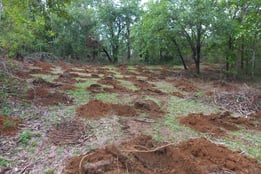

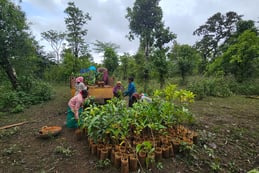

Empowering Communities through NTFPs and Medicinal Plants
Recognizing the importance of Non-Timber Forest Products (NTFPs) in rural livelihoods, the TREC has incorporated NTFP cultivation and sustainable harvesting practices into its social forestry model. By promoting the cultivation of medicinal plants and other valuable NTFPs, the organization helped local communities diversify their income sources while reducing pressure on natural forests.
Training programs are conducted to educate villagers on sustainable harvesting techniques, value addition, and market linkages for NTFPs. This not only enhances economic opportunities but also fosters a sense of ownership and responsibility towards forest conservation among community members.
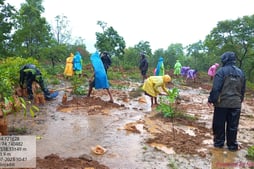


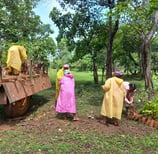
Creating Educational and Recreational Spaces
TREC has developed a network of nature trails and educational spaces within the restored forest areas to nurture environmental awareness and foster a connection with nature. These serve multiple purposes such as recreational opportunities for local communities and eco-tourists, outdoor classrooms for environmental education programs, and a platform for scientific research and biodiversity monitoring.
TREC utilizes these educational spaces, including interpretation centres and demonstration plots, to showcase the region's rich flora and fauna, traditional ecological knowledge, and sustainable forest management practices. These initiatives help bridge the gap between urban and rural populations, fostering a greater understanding of forest ecosystems and their importance.
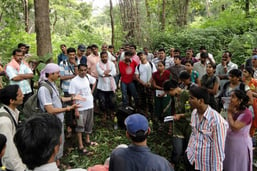


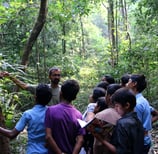
Partnerships for Sustainable Development
The success of the TREC's social forestry initiatives relies heavily on strong partnerships with various stakeholders. Collaborations have been forged with:
1. Local government bodies and forest departments for policy support and resource allocation.
2. Academic institutions for scientific research and monitoring of forest health and biodiversity.
3. Corporate partners for funding support through CSR initiatives.
4. Other like-minded and community-based organizations for knowledge sharing and capacity building.
These partnerships ensure a holistic approach to social forestry, combining traditional knowledge with modern scientific techniques and leveraging diverse resources for maximum impact.
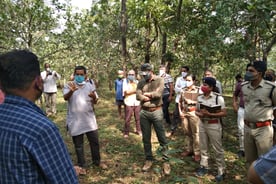

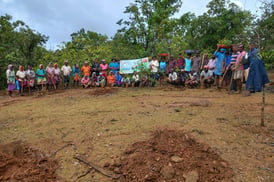

Monitoring and Adaptive Management
To ensure the long-term success of its social forestry activities, TREC has implemented a comprehensive monitoring and evaluation system. Regular surveys are conducted to assess:
1. Survival rates of planted tree saplings
2. Changes in forest cover and biodiversity
3. Socio-economic impacts on local communities
4. Effectiveness of NTFP cultivation and harvesting practices
The data collected through these monitoring efforts allows for adaptive management, enabling the organization to refine its strategies and address emerging challenges promptly.
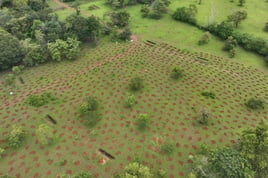

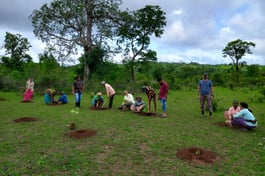

Conclusion
The social forestry activities undertaken by TREC in the northern Western Ghats demonstrate the power of an integrated conservation and community development approach. By combining afforestation and reforestation efforts with sustainable NTFP management, educational initiatives, and strong partnerships, the organization is making significant strides in restoring the region's ecological balance while improving local livelihoods.
As climate change and habitat loss continue to threaten biodiversity worldwide, such community-cantered conservation models offer a beacon of hope. TREC showcase how social forestry can be a powerful tool for achieving environmental sustainability and social equity, paving the way for a greener, more resilient future.
